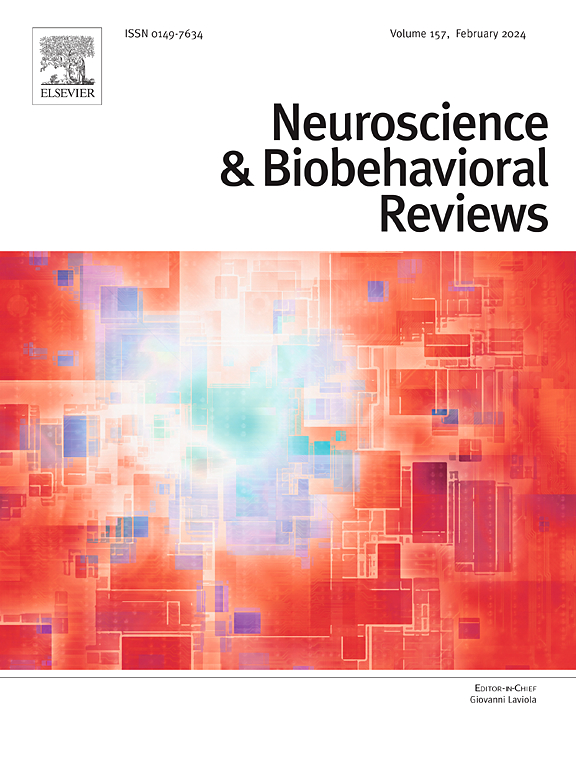揭示视蛋白的功能意义:来自鱼类的见解。
IF 7.9
1区 医学
Q1 BEHAVIORAL SCIENCES
引用次数: 0
摘要
自1983年克隆第一个视蛋白以来,在各种组织和物种中发现了许多视蛋白转录本。然而,许多这些视蛋白的功能意义仍然不清楚,特别是对于在视觉系统之外起作用的非视觉视蛋白,其下游过程大部分未被探索。鱼类提供了一个有希望的模型来弥合这一知识差距,由于它们广泛的视蛋白曲目,遗传易感性和进化相关性。这篇综述批判性地综合了目前对鱼类视蛋白调控的下游过程的理解,重点是进化适应、生物钟和皮肤颜色变化。而不是残留的光感受器,非视蛋白似乎是生理和行为反应的活跃介质。通过将分子机制与发育、行为和环境感知联系起来,我们提出视蛋白是感觉整合和适应的关键组成部分。在此过程中,本综述重新构建了视蛋白在视觉之外的研究,为其广泛表达和功能多样性提供了新的视角,最终促进了我们对光感受器生物学的理解。本文章由计算机程序翻译,如有差异,请以英文原文为准。
Shedding light on the functional significance of opsins: Insights from fish
Since the cloning of the first opsin in 1983, numerous opsin transcripts have been discovered across a variety of tissues and species. However, the functional significance of many of these opsins remains unclear, particularly for non-visual opsins that function outside the visual system, with their downstream processes largely unexplored. Fish offer a promising model to bridge this knowledge gap, due to their extensive opsin repertoire, genetic tractability, and evolutionary relevance. This review critically synthesises current understanding of the downstream processes regulated by opsins in fish, with a focus on evolutionary adaptations, the circadian clock and dermal colour change. Rather than being residual photoreceptors, non-visual opsins appear to be active mediators of physiological and behavioural responses. By connecting molecular mechanisms with development, behaviour, and environmental sensing, we propose that opsins serve as key components of sensory integration and adaptation. In doing so, this review reframes the study of opsins beyond vision, offering new perspectives on their widespread expression and functional versatility, ultimately advancing our understanding of photoreceptor biology.
求助全文
通过发布文献求助,成功后即可免费获取论文全文。
去求助
来源期刊
CiteScore
14.20
自引率
3.70%
发文量
466
审稿时长
6 months
期刊介绍:
The official journal of the International Behavioral Neuroscience Society publishes original and significant review articles that explore the intersection between neuroscience and the study of psychological processes and behavior. The journal also welcomes articles that primarily focus on psychological processes and behavior, as long as they have relevance to one or more areas of neuroscience.

 求助内容:
求助内容: 应助结果提醒方式:
应助结果提醒方式:


